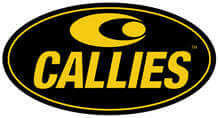
MS Access As A Dev Tool
Access continues to be a highly efficient tool for business database development.
Don't let a broken database ruin your Indianapolis business. We repair broken databases,
program custom Microsoft Access databases, convert Excel to Access, and upgrade old
Access databases to the latest version. Call (323) 285-0939 for a FREE consultation.
The Best Microsoft Access Database Solutions owner, consultant, and principal programmer is Alison Balter - a recognized expert Microsoft Access consultant. Alison is the author of 15 Microsoft Access training books and videos. She is a frequent guest speaker at MS Access conferences and has developed hundreds of applications for businesses of all types.
We know your business data is important; we listen to your concerns, ask questions, and gather information from all stake holders. We discuss your needs and requirements for your database. We find out what you want, why you need various features so we can obtain as much information as possible. Once we have the information we need, we work with you to design the proper database architecture, plus the dashboards, the questions (queries), forms, and reports you need for an excellent database system.

We also create websites designed for speed to display your data accurately, using ASP.NET technology. Fast, secure, and robust, our ASP.NET web sites and web applications give you true business tool for finding and displaying information dynamically on the web.






Access continues to be a highly efficient tool for business database development.

How to create a Microsoft Access application with some unique tips and tricks.

Your Access developer near me has some great info for you about using Access efficiently.
Call MS Access Solutions at (323)285-0939 For Complimentary Consultation
The material below originally appeared in Alison Balter's book Mastering Microsoft Office Access 2007 Development. and is reprinted here with the author's permission. There may be references to "Figures" or "Chapters"that are not reprintable and are not used on this page.
Forms and reports often contain tabular information, such as a row that contains all the fields for a customer. Using Access 2007, you can group these controls so that you can easily manipulate them as a unit. You can even create a layout with objects from different sections of the form! Using a layout, you can:
There are two types of layouts: tabular and stacked. With a tabular layout, the controls are arranged like a spreadsheet in rows and columns (see Figure 5.18). The labels appear at the top of the layout. Tabular layouts always span two sections because the labels are in one section and the controls are in another.
With a stacked layout, the controls are arranged vertically, as you would see them on a paper form (see Figure 5.19). A label appears to the left of each control. Stacked layouts are always contained within a single section of the form.
You can have multiple layouts on one form, and you can have both a tabular and a stacked layout on the same form. Layouts are saved with the form so that you can use them each time you are working in Layout view or Design view. The following sections go into the details of how to create and work with a layout.
Access automatically creates a stacked control layout if you use Quick Create to create the form or if you create a blank form and then drag a field from the Field List window onto the form. Creating your own layout is easy. Here's how:
After you have created a layout, you can easily move and resize it. Whether you are in Layout view or Design view, an orange selector appears in the upper-left corner of the layout. To move a layout, simply click to select the layout and then click and drag it to the appropriate place on the form. Notice in Figure 5.23 that the layout appears in two places. The first version of the layout designates the original position, and the second version of the layout shows the new position of the layout if you stop dragging it with the mouse. To size a layout, you must also click to select it. Use any sizing handle to click and drag to resize the layout. An outline appears designating the new size of the layout (see Figure 5.24). When you release the mouse button, the resizing rocess will be complete.
This material originally appeared in Alison Balter's book Mastering Microsoft Office Access 2007 Development and is reprinted here with the author's permission.
If you're dealing with a slow, outdated, or broken Access database, we can help. At MS Access Solutions, we've spent over 25 years helping businesses in Indianapolis and across the country build, fix, and modernize Microsoft Access databases that actually work the way you need them to.
We support industries of all types—healthcare, universities, insurance, agriculture, military, government, and small businesses. Whether you're running a custom Access app that's falling apart, or you need a more stable setup that multiple team members can access at the same time, we'll find a solution that fits.
Here are common problems we solve for our clients:
We offer hands-on help with everything from minor fixes to major rebuilds:
If you're in Indianapolis and need someone who can make repairs, create new features, or design and program a custom Microsoft Access database and make it work for you, give us a call at (323) 285-0939. We don't just fix problems—we help you get more done with less stress.
Find more information about our Microsoft Access programmer services on the Microsoft Access Programmer Topeka Kansas web page.

